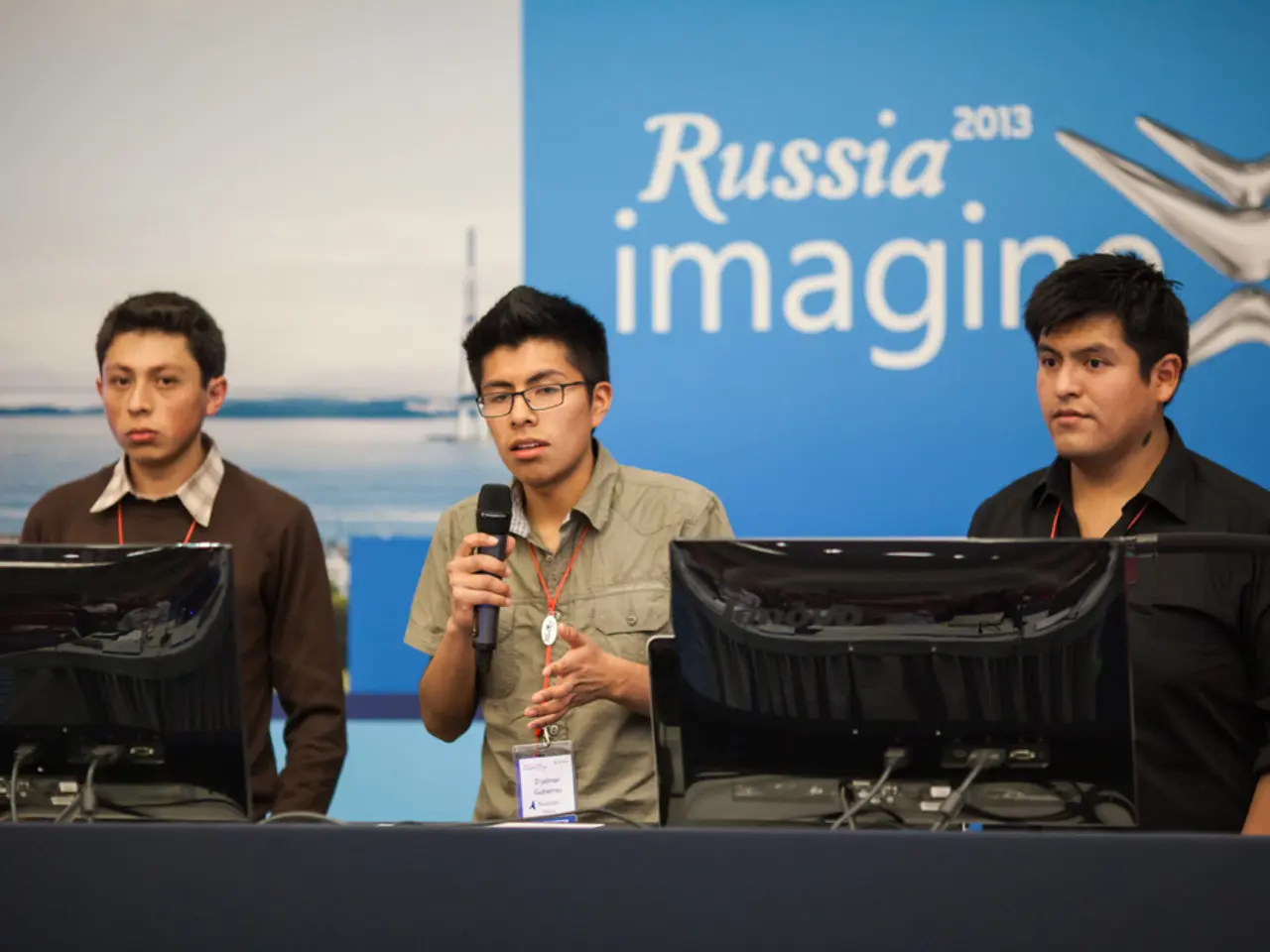AI Administrator David Sacks justifies lifting restrictions on China semiconductor imports
In a strategic move that marks a pivot in U.S. policy, the White House has approved export licenses for Nvidia and AMD, enabling them to sell certain AI chips to China [1][3]. This decision follows months of diplomacy between Washington and Beijing and reverses earlier export controls imposed to prevent Chinese entities from accessing advanced AI technology.
David Sacks, the White House's AI and crypto czar, defends this move as "nuanced" and "making a lot of sense" given the competitive landscape [1]. The rationale behind the shift is to prevent Chinese companies, such as Huawei, from monopolising the market. Allowing U.S. firms to continue competing in China, albeit with less advanced products, denies Huawei a monopoly and ensures U.S. companies retain influence and revenue in the world's largest semiconductor consumer market.
The resumption of sales maintains Nvidia and AMD's foothold in China, one of the largest markets for AI chips, even if they cannot offer their most advanced products. This helps slow Huawei's ascent by forcing them to compete with technologically limited—but still sophisticated—U.S. offerings.
The move signals a practical accommodation in U.S.-China technology relations, recognising that total bans can sometimes backfire by accelerating China's self-sufficiency and diminishing U.S. economic leverage. However, it also raises questions about the long-term effectiveness of export controls and whether China's domestic capabilities (driven by companies like Huawei) will eventually outpace restricted U.S. products.
Here's a summary of the key impacts:
| Aspect | Before Policy Reversal | After Policy Reversal | |---------------------------------|----------------------------------|---------------------------------------| | U.S. Chipmakers in China | Severely restricted or banned | Can sell (deprecated) chips | | Huawei’s Position | Poised to dominate Chinese market| Must compete with U.S. firms | | U.S. Influence | Diminished | Maintained (but with limits) | | China’s AI Development | Potentially slowed, but with pressure to innovate domestically | Continued with access to some U.S. tech | | Global Tech Competition | Risk of bifurcation (U.S. vs. China ecosystems) | More integrated, though with restrictions |
The decision is a calculated move to balance national security concerns with economic realities. By allowing Nvidia and AMD to sell restricted AI chips in China, the U.S. aims to contain Huawei's growth without surrendering the market entirely, preserving both competition and American technological influence—for now. However, the sustainability of this balance and its ability to prevent China from achieving full semiconductor self-sufficiency remain open questions in the ongoing tech rivalry.
References: [1] https://www.bloomberg.com/news/articles/2023-05-01/white-house-lifts-curbs-on-nvidia-chip-sales-to-china-in-shift [3] https://www.reuters.com/business/us-business/white-house-lifts-curbs-nvidia-chip-sales-china-2023-05-01/
Nvidia and AMD's continued presence in the Chinese market, despite selling less advanced AI chips, is an attempt to hinder Huawei's expansion by making them compete with technologically limited, but sophisticated, U.S. offerings. This strategic move is aimed at preserving American technological influence and maintaining competition, while recognizing the potential risks and limitations of export controls in the long term.




